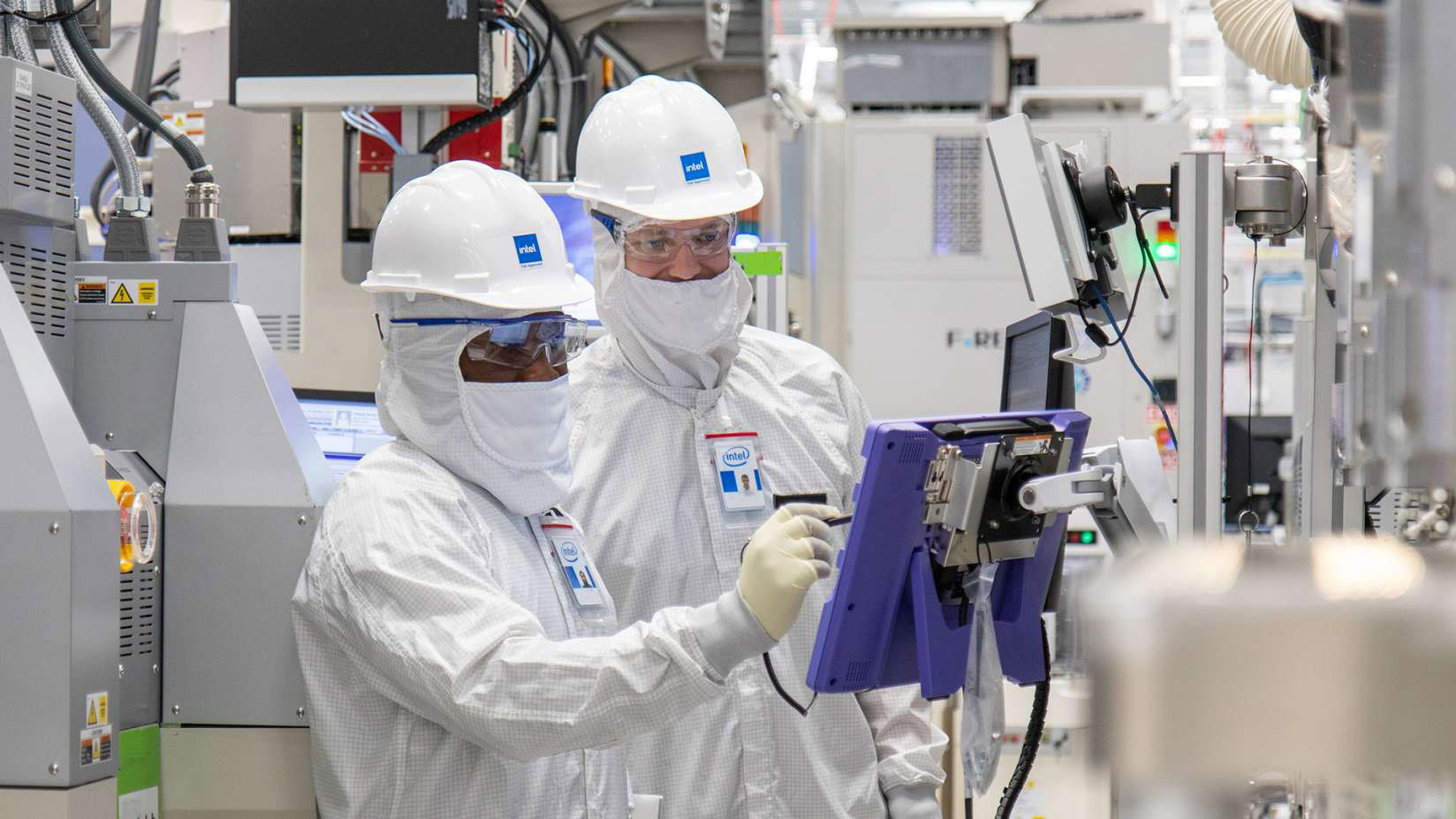Intel begins high-volume production of Intel 4 node chips this week
The second step on Intel's 'five nodes in four years' roadmap is all systems go.

Intel is set to begin high-volume manufacturing of its Intel 4 node with bleeding edge extreme ultraviolet lithography (EUV) in Ireland from Friday the 29th of September. It will host a ceremony at its Fab 34 facility near Leixlip, Ireland at 12:45pm Irish Standard Time. Intel CEO Pat Gelsinger will be in attendance.
Though it's not the first facility to begin Intel 4 production (it's already underway at its D1 fab in Oregon), it is the first in Europe, and the wafers and dies it produces will end up in upcoming Meteor Lake processors. Specifically, Intel 4 is used to produce the compute tiles of Meteor Lake CPUs, which contain P-cores (Redwood Cove) and E-cores (Crestmont).
Intel 4 is a big deal. Intel has projected that it will allow a greater than 20% increase in clock speed within the same power budget over Intel 7. That's a key figure for laptop use cases. Higher performance is great, but battery life is all important too. Of course, smaller dies allow Intel to achieve higher yields, with more dies per wafer.
EUV is a key pillar of Intel's aggressive process roadmap, allowing it to aggressively produce five nodes in four years, the first of which is Intel 7, as found in 12th Gen Alder Lake, 13th Gen Raptor Lake and upcoming 14th Gen Raptor Lake Refresh CPUs. Intel 4 is all but in full production. It's to be followed by Intel 3, a refined version of Intel 4. Arrow Lake, the next desktop chips we'll see, will be built with the 20A process. They're likely to launch some time in the second half of 2024. This is the point at which Intel expects to achieve process parity—if not leadership—over its semiconductor rivals. Finally, there's 18A, which is due to begin production in late 2024.

Best gaming PC: The top pre-built machines.
Best gaming laptop: Great devices for mobile gaming.
I'll admit to being disappointed not to see Meteor Lake desktops. By that I mean proper LGA1851 enthusiast class products. Intel has clarified that we'll see NUC, AIO or embedded desktop solutions, but a full top-to-bottom desktop family including K series chips won't be happening. A 6GHz+ compute tile with next-gen P and E cores would have been very exciting for gamers. But now that it's not happening, the pressure is on Intel to deliver something even better for desktop users with Arrow Lake. I'm really looking forward to that.
The impression I got after talking to Intel representatives was that the company is feeling very bullish. Intel is spending billions to build up its manufacturing capacity, including expanding its US based manufacturing. If it's disaggregated tile approach and core architectures match its aggressive node roadmap, the upcoming years could end up looking really good for Intel.
The biggest gaming news, reviews and hardware deals
Keep up to date with the most important stories and the best deals, as picked by the PC Gamer team.

Chris' gaming experiences go back to the mid-nineties when he conned his parents into buying an 'educational PC' that was conveniently overpowered to play Doom and Tie Fighter. He developed a love of extreme overclocking that destroyed his savings despite the cheaper hardware on offer via his job at a PC store. To afford more LN2 he began moonlighting as a reviewer for VR-Zone before jumping the fence to work for MSI Australia. Since then, he's gone back to journalism, enthusiastically reviewing the latest and greatest components for PC & Tech Authority, PC Powerplay and currently Australian Personal Computer magazine and PC Gamer. Chris still puts far too many hours into Borderlands 3, always striving to become a more efficient killer.

